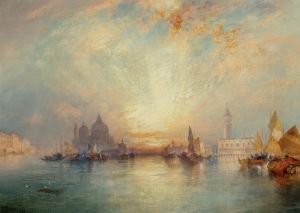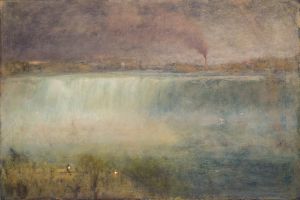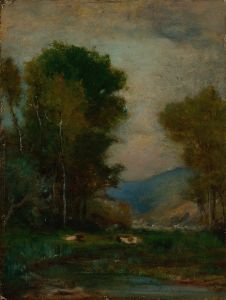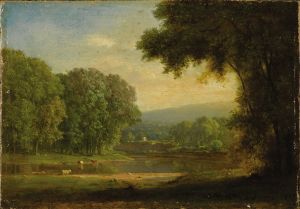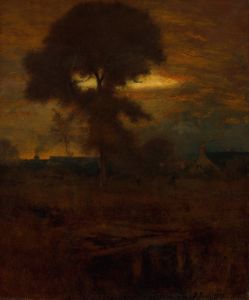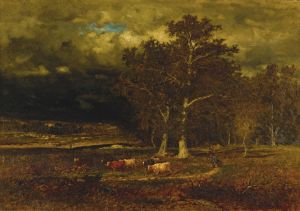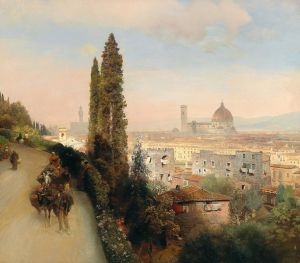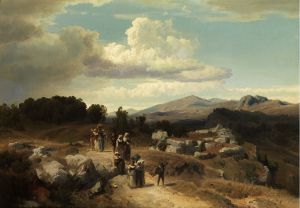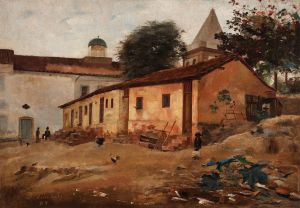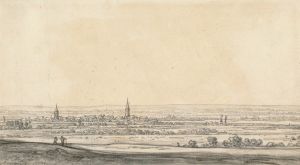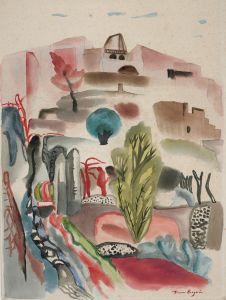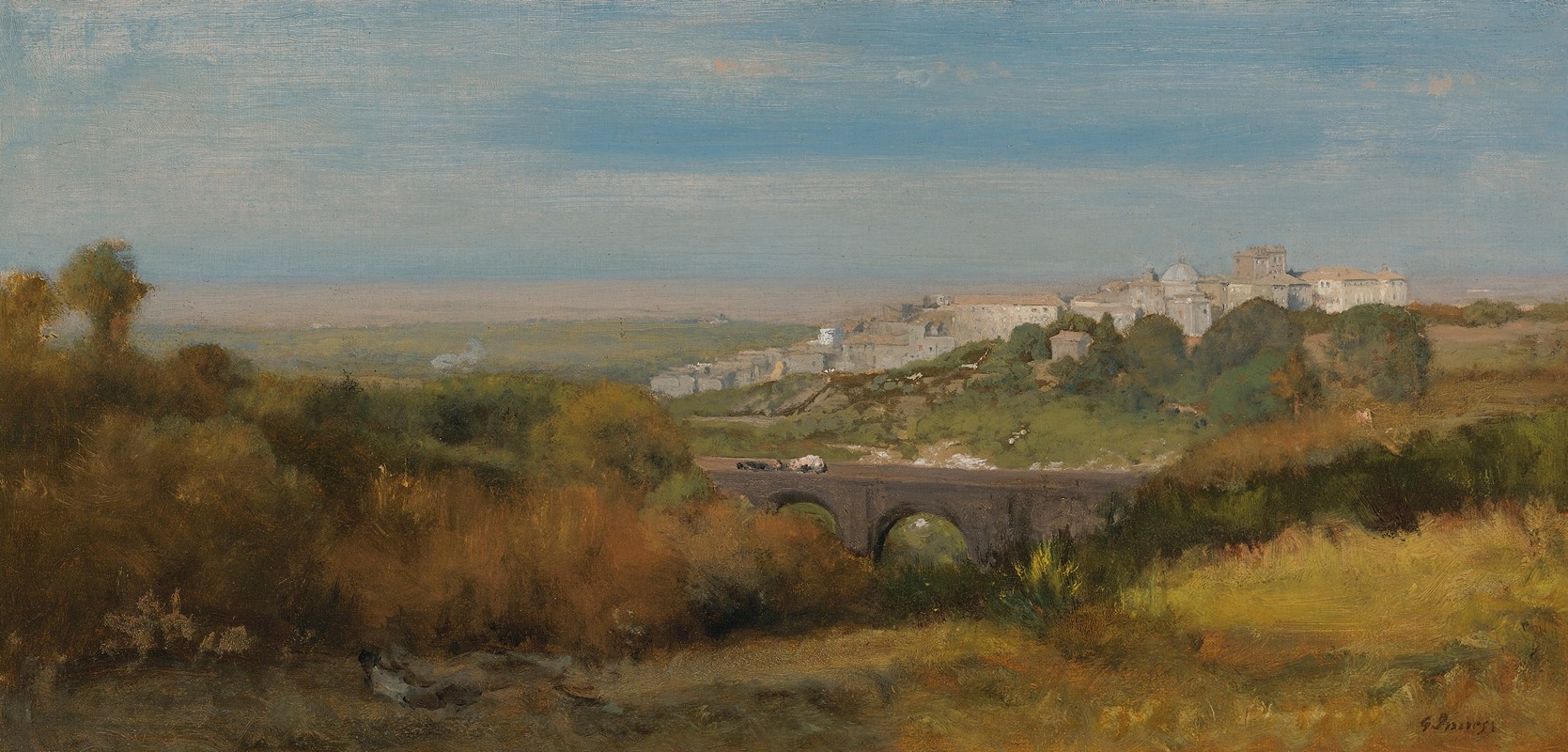
Albano, Italy
A hand-painted replica of George Inness’s masterpiece Albano, Italy, meticulously crafted by professional artists to capture the true essence of the original. Each piece is created with museum-quality canvas and rare mineral pigments, carefully painted by experienced artists with delicate brushstrokes and rich, layered colors to perfectly recreate the texture of the original artwork. Unlike machine-printed reproductions, this hand-painted version brings the painting to life, infused with the artist’s emotions and skill in every stroke. Whether for personal collection or home decoration, it instantly elevates the artistic atmosphere of any space.
"Albano, Italy" is a painting by the American landscape artist George Inness, created in 1866. Inness, often regarded as one of the most influential figures in 19th-century American art, was a prominent member of the Hudson River School before transitioning to a more Tonalist style later in his career. This painting reflects his interest in capturing the atmospheric qualities of a landscape, as well as his deep engagement with European scenery and artistic traditions.
The work depicts a serene view of the Italian countryside near the town of Albano, located in the Lazio region, not far from Rome. Albano Laziale, as it is formally known, is part of the Castelli Romani area, a region historically appreciated for its picturesque landscapes and ancient Roman heritage. Inness visited Italy during the mid-19th century, and his time there had a profound impact on his artistic development. The Italian countryside, with its soft light and harmonious compositions, provided him with inspiration to explore new approaches to color, form, and mood.
"Albano, Italy" exemplifies Inness's ability to blend realism with a poetic sensibility. The painting features a balanced composition, with rolling hills, scattered trees, and a tranquil sky. The use of warm, earthy tones and diffused light conveys a sense of calm and timelessness, characteristic of Inness's mature work. His technique in this piece demonstrates his shift away from the detailed, precise style of the Hudson River School toward a more expressive and atmospheric approach, which would later define the Tonalist movement.
The painting is also notable for its spiritual undertones, a recurring theme in Inness's work. Influenced by the writings of Emanuel Swedenborg, a Swedish theologian and mystic, Inness sought to evoke a sense of the divine presence in nature. While "Albano, Italy" does not explicitly depict religious imagery, its harmonious composition and meditative quality reflect Inness's belief in the spiritual dimension of the natural world.
Today, "Albano, Italy" is recognized as an important example of Inness's Italian period and his broader contribution to American landscape painting. The work is held in the collection of the Smithsonian American Art Museum in Washington, D.C., where it continues to be appreciated for its artistic and historical significance.





